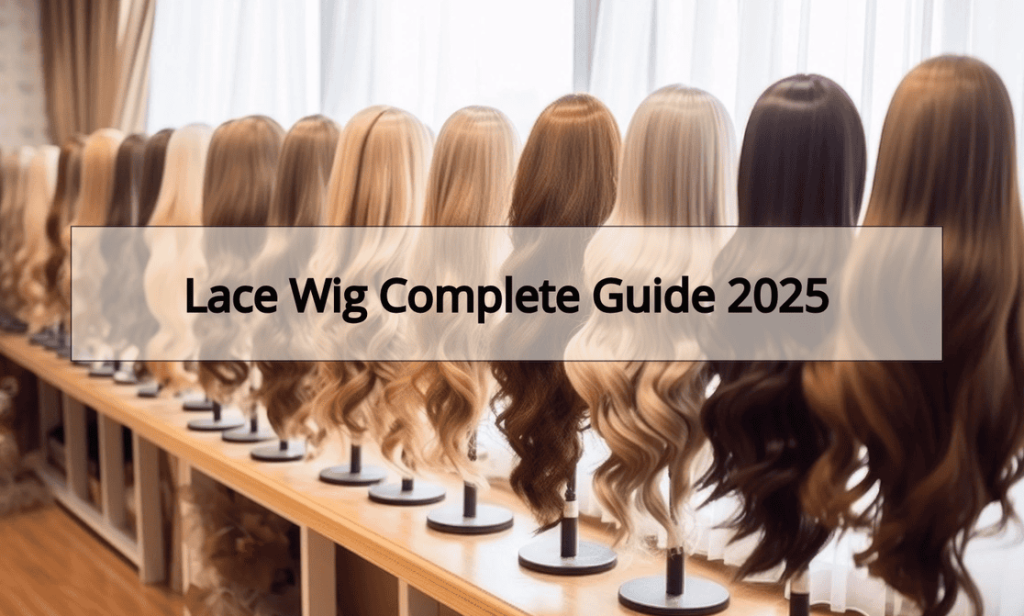Hair Knowledge
Lace Wig: The Complete Guide (2025 Edition)
I. What Is a Lace Wig?
A lace wig is a type of wig constructed with a fine lace mesh as the base, where individual hair strands—usually made of high-quality human hair—are meticulously hand-knotted onto the lace. This lace mimics the appearance of a natural scalp and creates an ultra-realistic hairline and parting. When worn properly, a lace wig gives the illusion that the hair is growing directly from your scalp, making it virtually undetectable to the naked eye.
1. The Anatomy of a Lace Wig
To understand what makes lace wigs unique, let’s break down their basic structure:
- Lace Base: The lace is typically made of Swiss lace, French lace, or ultra-thin HD lace. It’s breathable, soft, and sits flush against your skin.
- Hair Strands: Most premium lace wigs are made of Remy or Virgin human hair, offering a natural look, long lifespan, and full styling flexibility.
- Cap Construction: The rest of the wig (beyond the lace area) is constructed using either hand-tied methods, machine-sewn wefts, or a combination of both, depending on the type (lace front, full lace, etc.).
- Hairline Design: High-quality lace wigs feature a pre-plucked hairline and baby hairs to enhance realism and reduce the need for customization.
2. Key Features of Lace Wigs
Lace wigs are not just about aesthetics—they offer a blend of comfort, realism, and styling flexibility. Here’s what makes them stand out:
- Natural-Looking Hairline: The hand-tied lace at the front allows for a realistic transition from wig to skin, especially when the lace is melted correctly.
- Breathability: The lace base allows air to flow through, keeping your scalp cooler than traditional wig caps.
- Custom Parting: Many lace wigs allow you to part the hair in multiple directions (depending on type), giving you full styling freedom.
- Lightweight & Comfortable: Ideal for long-term wear or daily use, without feeling bulky or heavy.
- Versatile Styling: High-quality lace wigs can be heat-styled, braided, or curled—depending on the hair type used.
3. Pros and Cons of Lace Wigs
Understanding the advantages and limitations will help you determine whether lace wigs are the right fit for your lifestyle and hair needs.
✅ Pros:
- Ultra-realistic appearance
- Breathable and comfortable
- Reusable with proper care
- Suitable for protective styling
- Easy to style, curl, straighten
❌ Cons:
- Delicate lace may require gentle handling
- Installation (melt or glue) can be time-consuming
- Higher cost than standard wigs
- Regular maintenance is essential to retain longevity
II. Types of Lace Wigs: Understanding the Differences
Lace wigs come in several styles, each offering different levels of lace coverage, styling versatility, and price. Choosing the right type depends on your client’s needs—whether they’re looking for everyday wear, full styling freedom, or a natural hairline with minimal effort.
1. Lace Front Wig
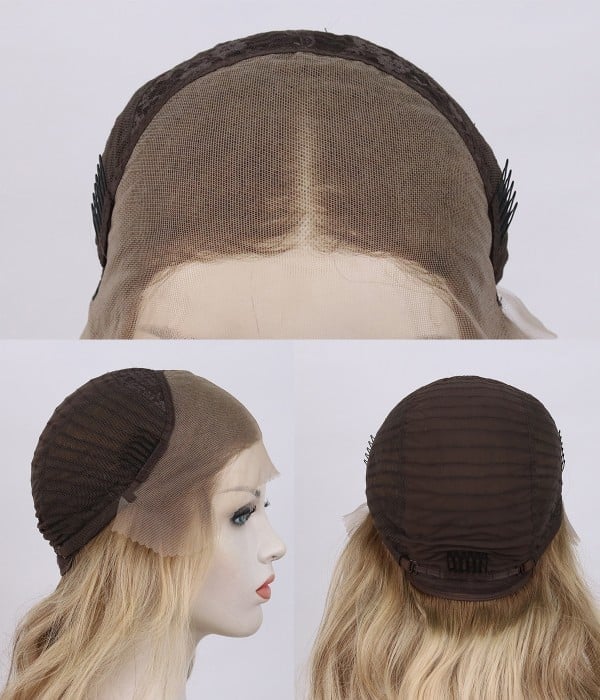
Definition:
A lace front wig has a sheer lace panel that covers only the front portion of the wig—typically from temple to temple or ear to ear—while the rest of the cap is constructed with a more durable material (such as a breathable mesh or machine-sewn wefts).
Features:
- Natural-looking hairline at the front
- Lace coverage typically ranges from 13×4 to 13×6 inches
- Hair can be parted in the front section
- Easy to apply with glue or glue-less methods
Pros:
- More affordable than full lace wigs
- Easy to maintain and apply
- Offers a realistic front hairline for styling down or side parts
Considerations:
- Limited parting space
- Can’t be worn in high ponytails or updos (the back is not lace-based)
Best for:
- Clients seeking a natural front hairline with lower maintenance
- Everyday users or beginners
2. Full Lace Wig
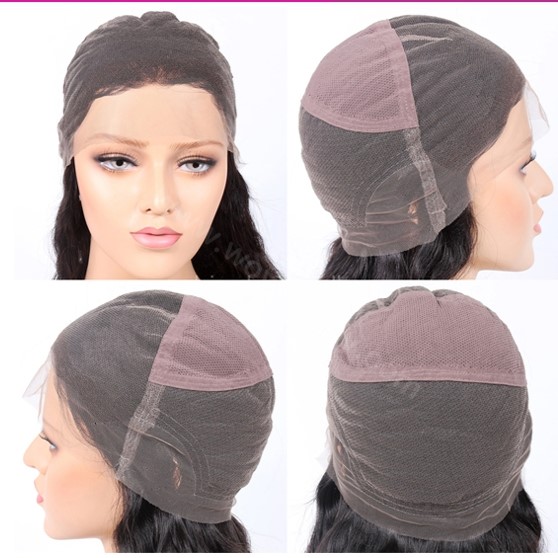
Definition:
A full lace wig has lace throughout the entire cap, meaning every strand of hair is hand-tied onto lace, covering the whole scalp area. This design offers the highest degree of flexibility and realism.
Features:
- 100% hand-tied construction
- Allows parting in any direction
- Can be styled into high buns, ponytails, or braided looks
- Requires more time to install and care for
Pros:
- Maximum versatility in styling
- Ultra-realistic from all angles (not just the front)
- Breathable and lightweight for all-day comfort
Considerations:
- Higher cost due to labor-intensive construction
- Installation may require adhesive for a secure fit
- More fragile than lace front wigs—requires careful handling
Best for:
- Professional clients, photoshoots, bridal looks
- Those who want full styling freedom and a flawless finish
3. 360 Lace Wig
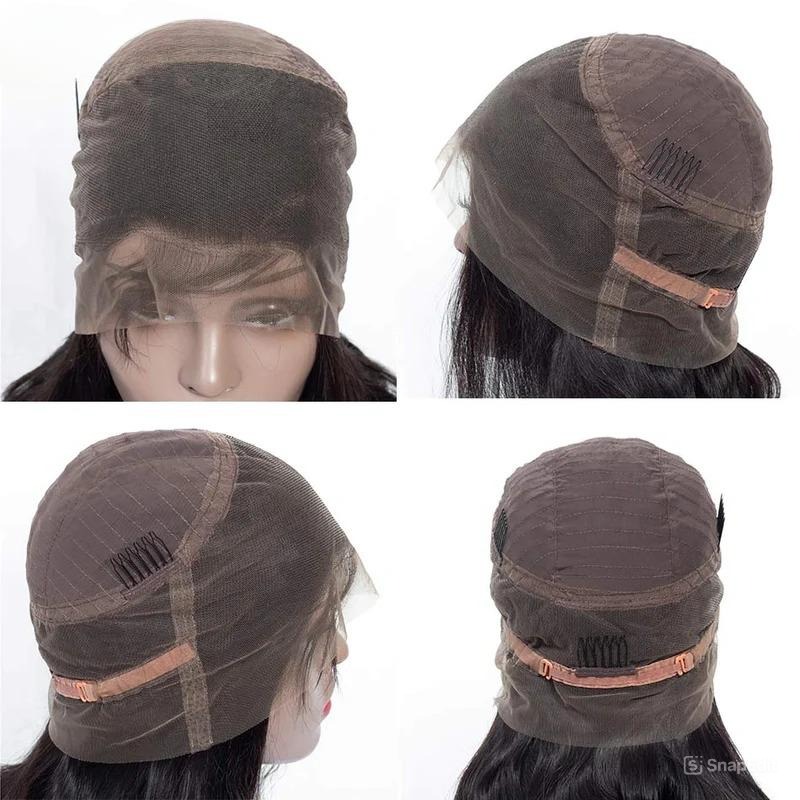
Definition:
A 360 lace wig features lace around the entire perimeter of the head—front, sides, and back—while the middle section of the cap is machine-sewn. It offers a hybrid between lace front and full lace wigs.
Features:
- Allows for updos and ponytails
- Usually includes pre-sewn adjustable straps and combs
- Offers lace from ear to ear and around the nape
Pros:
- More affordable than full lace wigs with similar styling versatility
- Easier to install than full lace wigs
- Good balance between realism and practicality
Considerations:
- Limited parting space in the crown/middle section
- May feel bulkier than full lace designs
Best for:
- Clients who want to wear their hair up
- Moderate budget users looking for realism and flexibility
4. T-Part Lace Wig (Middle Part or Side Part Lace Wig)
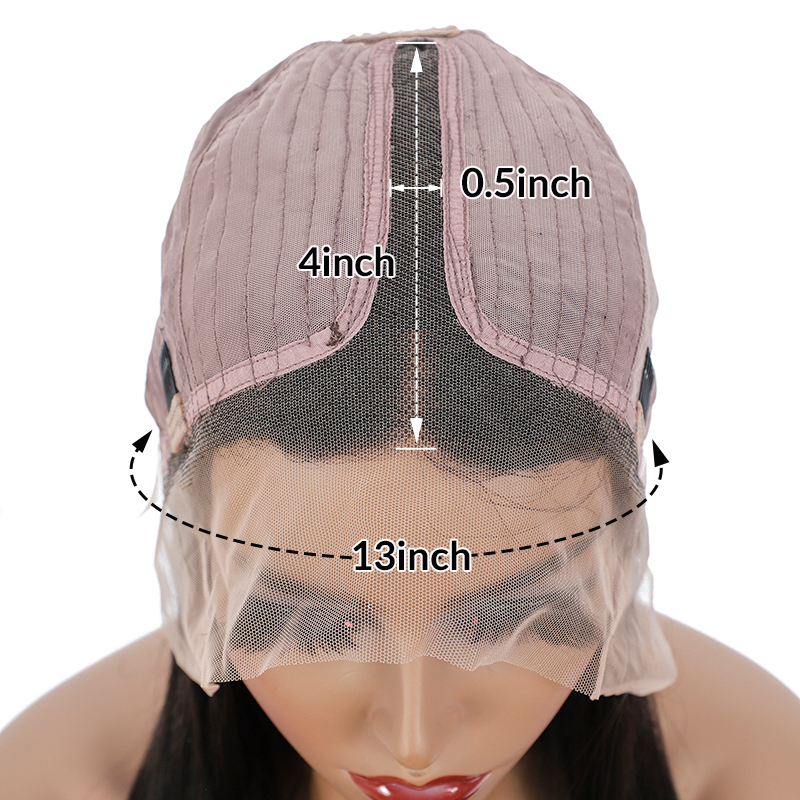
Definition:
Also known as a lace part wig, the T-part wig includes a narrow T-shaped lace portion—across the front hairline and along a middle (or side) part line.
Features:
- Pre-defined parting space (often middle part only)
- Minimal lace for quick installation
- Machine wefted back and sides
Pros:
- Budget-friendly
- Beginner-friendly: usually comes pre-plucked and pre-styled
- Quick to install—ideal for on-the-go clients
Considerations:
- Very limited parting or styling options
- Not suitable for high buns or flexible part changes
Best for:
- First-time wig wearers
- Clients who prefer a fixed part and low-maintenance styling
5. HD Lace Wig
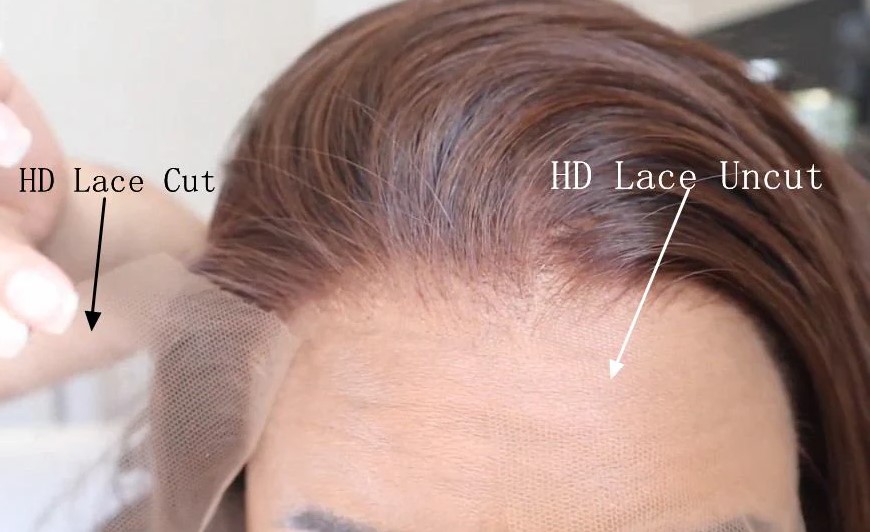
Definition:
An HD lace wig uses ultra-thin, high-definition lace that disappears seamlessly into the scalp—especially under HD cameras or strong lighting. This can be a lace front or full lace cap, but with lace made from HD material.
Features:
- Extremely thin, transparent lace
- Offers the most realistic scalp illusion
- Ideal for professional media and close-up visuals
Pros:
- Undetectable finish, even on camera
- Requires minimal bleaching or customization
- Comfortable and breathable
Considerations:
- Fragile and delicate—needs gentle care
- More expensive than regular lace types
Best for:
-
Celebrities, influencers, bridal clients, or high-end users
6. Transparent Lace Wig
Definition:
A transparent lace wig is constructed using lace that is thinner and lighter in color—typically white or light beige—designed to blend effortlessly into fair to medium skin tones. Unlike HD lace, which is ultra-fine and fragile, transparent lace is slightly more durable while still offering an invisible finish when installed correctly.
Features:
- Lace is sheer and see-through, offering a natural scalp appearance
- Available in various constructions: lace front, full lace, or 360 lace
- Often comes pre-plucked with baby hairs for a natural look
Pros:
- Gives a realistic hairline, especially when tinted or blended with makeup
- More durable than HD lace but still lightweight and breathable
- Easy to melt with lace glue or spray for a seamless finish
Considerations:
- May require lace tinting or foundation to match deeper skin tones
- Not as invisible on camera as HD lace, but great for daily wear
- Needs proper installation to avoid visible edges
Best for:
- Everyday users who want a natural look with less fragility than HD lace
- Stylists or clients who plan to customize lace color
- Those looking for a balance between realism and durability
📝 Note: Transparent lace and HD lace are often confused, but the key difference lies in thickness and flexibility. HD lace is more undetectable but more delicate. Transparent lace is slightly more visible but sturdier—making it a more practical option for everyday wear.
III. How to Choose the Right Lace Wig
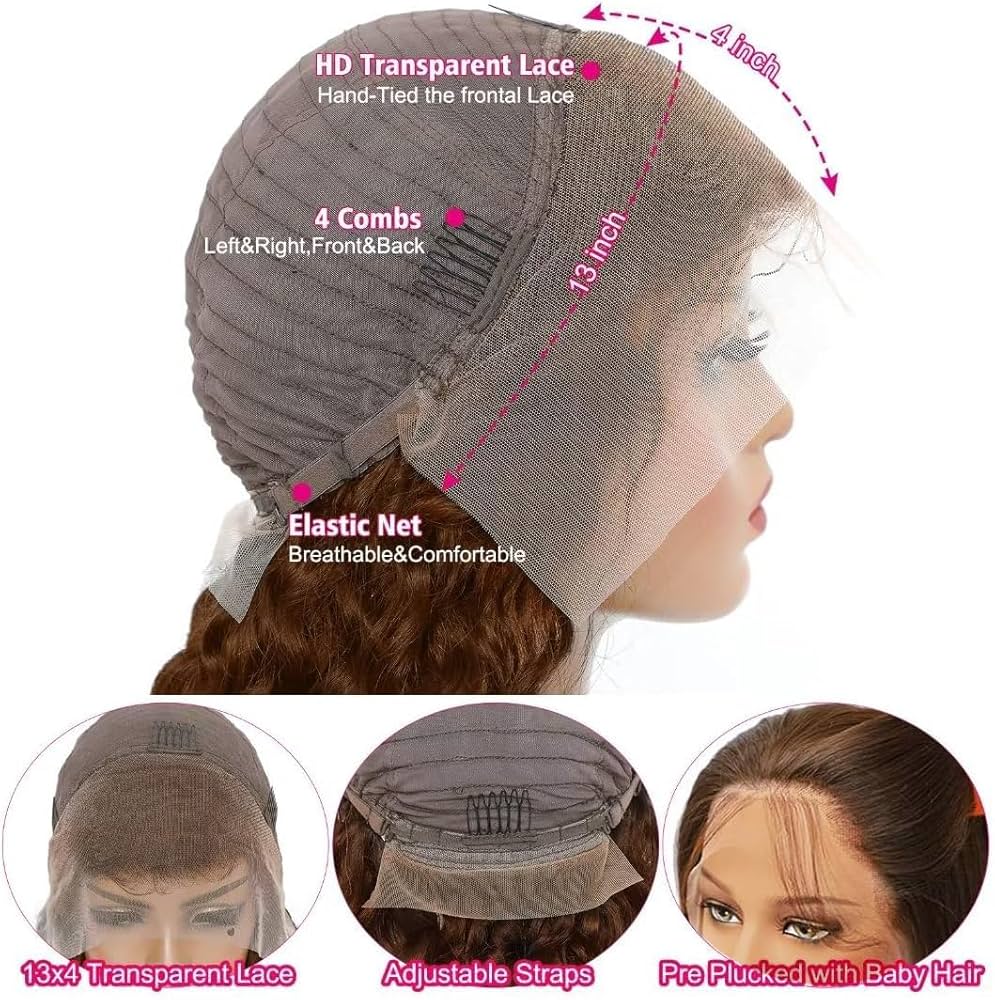
Choosing the perfect lace wig isn’t just about style — it’s about finding a seamless match for your lifestyle, hair goals, and daily needs. Below are the key factors to consider when selecting the right lace wig for you or your salon clients.
1. Consider Your Lifestyle and Purpose
Are you looking for a wig for everyday wear, special occasions, or protective styling during hair recovery? Your intended use will determine the best lace type:
-
Everyday wear: Go for transparent lace or lace front wigs for balance between realism and durability.
-
High-definition or camera-ready looks: HD lace or full lace wigs deliver the most undetectable finish.
-
Protective styling: A 360 lace wig offers styling flexibility without stressing natural hair.
2. Match Lace Type to Skin Tone
Proper lace color blending is essential for a natural look:
-
Fair to light skin tones: Transparent lace or light beige lace is usually suitable.
-
Medium to deep skin tones: Use medium brown or dark brown lace, or tint transparent lace with foundation or lace tint spray.
-
Professional finish: HD lace adapts easily to various skin tones but is more fragile.
3. Choose the Wig Construction
Each lace wig type offers different advantages depending on styling needs:
| Wig Construction | Best For | Styling Flexibility | Comfort |
|---|---|---|---|
| Lace Front Wig | Everyday wear, simple looks | Limited to front styling | High |
| Full Lace Wig | Updos, ponytails, high styling | 360° flexibility | Moderate to High |
| 360 Lace Wig | Natural hairline + ponytails | Very high | High |
| U-Part/L-Part | Blending with leave-out hair | Minimal lace area | Maximum |
4. Hair Type and Texture
Make sure the lace wig texture aligns with your natural hair or desired look:
-
Straight & body wave: Ideal for a sleek, polished finish.
-
Kinky curly & Afro: Perfect for blending with textured natural hair.
-
Bone straight or silky: Best for high-gloss, low-maintenance styling.
Consider 100% human hair wigs (especially virgin or Remy hair) for the most natural appearance and longest lifespan.
5. Cap Size and Fit
Improper fit can ruin the entire look or cause discomfort. Always:
-
Measure your head circumference before purchase.
-
Look for adjustable straps, combs, or elastic bands for better grip.
-
Consider custom-made lace wigs if you have unique measurements.
6. Wig Density
Lace Density affects both appearance and realism:
-
130%–150%: Natural density; ideal for daily wear.
-
180%: Full and voluminous, suitable for glam looks.
-
200%+: Very thick; often used for photo shoots or dramatic styles.
7. Budget
Lace wig prices can vary significantly depending on lace type, hair origin, and construction:
-
Transparent lace front wigs: Affordable and beginner-friendly.
-
Full lace HD wigs: Higher-end, best for professionals or premium clients.
-
Vietnamese or Indian virgin hair: Offers excellent quality at competitive prices.
✅ Pro Tip: If you’re a salon owner or stylist, stock a range of lace types and densities to cater to different preferences and skin tones. Offer consultation services to help your clients choose the most suitable wig.
IV. How to Care for a Lace Wig
Proper care is essential for maintaining the beauty, longevity, and realism of your lace wig — especially when working with premium human hair and delicate lace materials like HD or transparent lace. Whether you’re a salon professional or an individual user, these care tips will help you keep your wig looking flawless for as long as possible.
1. Washing Your Lace Wig
How often should you wash it?
Generally, wash your lace wig every 10–15 wears or every 2–3 weeks, depending on product buildup, sweat, or environmental exposure.
Step-by-step washing guide:
-
Detangle first: Use a wide-tooth comb or wig brush to gently remove tangles from ends to roots.
-
Use sulfate-free shampoo: Soak the wig in lukewarm water, then gently cleanse using a sulfate-free, paraben-free shampoo. Avoid scrubbing the lace area.
-
Condition properly: Apply conditioner from mid-shaft to ends. Leave for 5–10 minutes, then rinse thoroughly. Avoid applying conditioner near the lace or roots.
2. Drying the Wig
-
Pat dry with a towel: Never rub the lace or twist the wig.
-
Air dry on a wig stand: Maintain shape and prevent frizz. Avoid hanging it by the lace.
-
Use a blow dryer with caution: If needed, use a low-heat setting and a heat protectant spray.
3. Styling Tips
-
Use heat styling carefully: Human hair lace wigs can be curled, straightened, or waved — but always use a heat protectant and set tools below 180°C (350°F).
-
Avoid styling products with alcohol: These can dry out the hair and weaken the lace.
-
Low manipulation: Minimize daily brushing or tugging at the lace area to prevent shedding or tearing.
4. Sleeping with a Lace Wig
Although sleeping with your lace wig is possible, it’s not always recommended, especially with delicate lace types. If you choose to sleep in your wig:
-
Secure it gently: Use a silk or satin scarf to wrap your head or wear a satin bonnet.
-
Avoid friction: Sleep on a silk pillowcase to reduce friction and frizz.
-
Loosen tension: Never sleep with tight hairstyles like high ponytails or buns.
5. Storing Your Lace Wig
-
Store on a wig stand or mannequin head to retain shape.
-
Avoid sunlight and heat exposure when not in use.
-
Keep in a breathable satin or silk bag if you’re storing it in drawers or closets.
6. Adhesive and Lace Maintenance
If you use lace glue or tape:
-
Clean the lace regularly: Use a gentle lace adhesive remover to keep the lace clear of buildup.
-
Be gentle during removal: Never pull off a wig without softening the glue or tape with the proper solution.
-
Avoid scratching or rubbing the lace during cleaning.
7. Longevity Tips
With proper care, a high-quality human hair lace wig can last:
-
6–12 months for daily wear
-
1.5–2 years for occasional use
Regular maintenance and professional reinstallations (for glue-on lace wigs) help extend the wig’s lifespan significantly.
💡 Pro Tip: Offer your clients a wig care service at your salon, or include a detailed care card with every lace wig sale to boost customer satisfaction and brand trust.
Final Thoughts
Lace wigs are a powerful tool for transforming your hairstyle with realism, elegance, and flexibility. Whether you’re seeking a confidence boost, a protective style, or a red-carpet-ready look—lace wigs offer one of the most natural and luxurious solutions available. Just remember: choosing high-quality hair and proper care will make all the difference.

